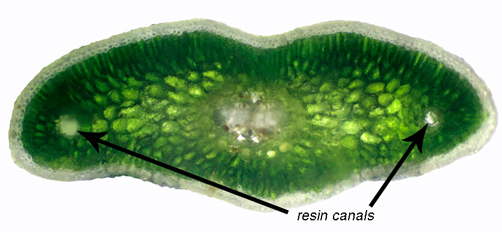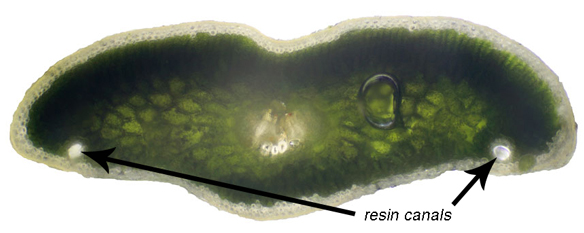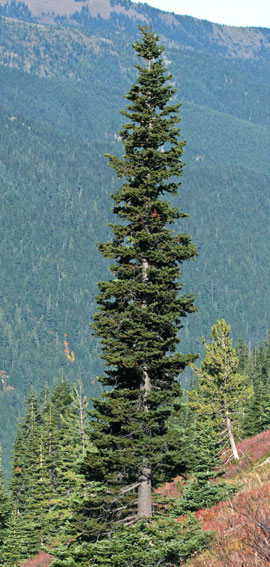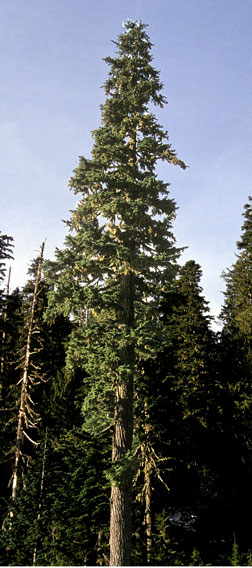
Identification of Conifers
of Vancouver Island
| QUICK LINKS: |
Introduction
Vancouver Island is located off the west coast of British Columbia, Canada. There are 34 species of trees naive to the island, much fewer than on the mainland (Table 1). The lack of species in some cases can make identification much easier. In the case of pines, there are only two species, one of which has two needles per fascicle (Pinus contorta) and the other has 5 needles per fascicle (Pinus monticola ). There are only two species of true firs (Genus Abies) and they differ in foliage characteristics as well as geographic distribution. In the case of spruce, the island only has one native species (Picea sitchensis). If a conifer has hanging cones, it can only be a spruce, a hemlock, or a Douglas-fir.
| No. | Group | Species | Common |
|---|---|---|---|
| Coniferous Trees | 1 | Fir | Abies amabilis | Amabilis Fir |
| 2 | Fir | Abies grandis | Grand Fir |
| 3 | Fir | Abies lasiocarpa | Subalpine Fir |
| 4 | Cypress | Chamaecyparis nootkatensis | Yellow-cedar |
| 5 | Juniper | Juniperus scopulorum | Rocky Mountain Juniper |
| 6 | Spruce | Picea sitchensis | Sitka Spruce |
| 7 | Pine | Pinus contorta contorta | Shore Pine |
| 8 | Pine | Pinus monticola | Western White Pine |
| 9 | False Hemlock | Pseudotsuga menziesii | Douglas-fir |
| 10 | Yew | Taxus brevifolia | Pacific Yew |
| 11 | Arborvitae | Thuja plicata | Western Redcedar |
| 12 | Hemlock | Tsuga heterophylla | Western Hemlock |
| 13 | Hemlock | Tsuga mertensiana | Mountain Hemlock |
Table of Deciduous species
| Deciduous Trees | |||
| 14 | Maple | Acer circinatum | Vine Maple |
| 15 | Maple | Acer glabrum | Douglas Maple |
| 16 | Maple | Acer macrophyllum | Bigleaf Maple |
| 17 | Alder | Alnus rubra | Red Alder |
| 18 | Arbutus | Arbutus menziesii | Arbutus |
| 19 | Dogwood | Cornus nuttallii | Pacific Dogwood |
| 20 | Hawthorn | Crataegus douglasii | Black Hawthorn |
| 21 | Apple | Malus fusca | Pacific crab-apple |
| 22 | Cottonwood | Populus balsamifera trichocarpa | Black Cottonwood |
| 23 | Aspen | Populus tremuloides | Trembling Aspen |
| 24 | Cherry | Prunus avium | Red Alder |
| 25 | Cherry | Prunus emarginata | Bitter Cherry |
| 26 | Cherry | Prunus virginiana | Chokecherry |
| 27 | Oak | Quercus garryana | Garry Oak |
| 28 | Cascara | Rhamnus purshiana | Cascara |
| 29 | Willow | Salix lasiandra | Pacific Willow |
| 30 | Willow | Salix sitchensis | Sitka Willow |
| 31 | Ash | Fraxinus latifolia | Oregon ash |
| 32 | Ash | Sorbus aucuparia | Mountain Ash | 33 | Ash | Sorbus sitchensis | Sitka Mountain Ash |
Conifer Identification
Refer to Conifers Key 1.
A. The first step in identification is to determine the Genus of the species examined. To do this, examine the leaves first. Are the leaves needle-like (fig. 1) or scale-like (fig.2).
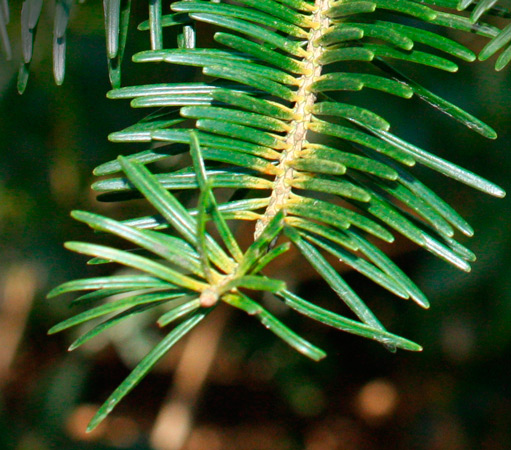
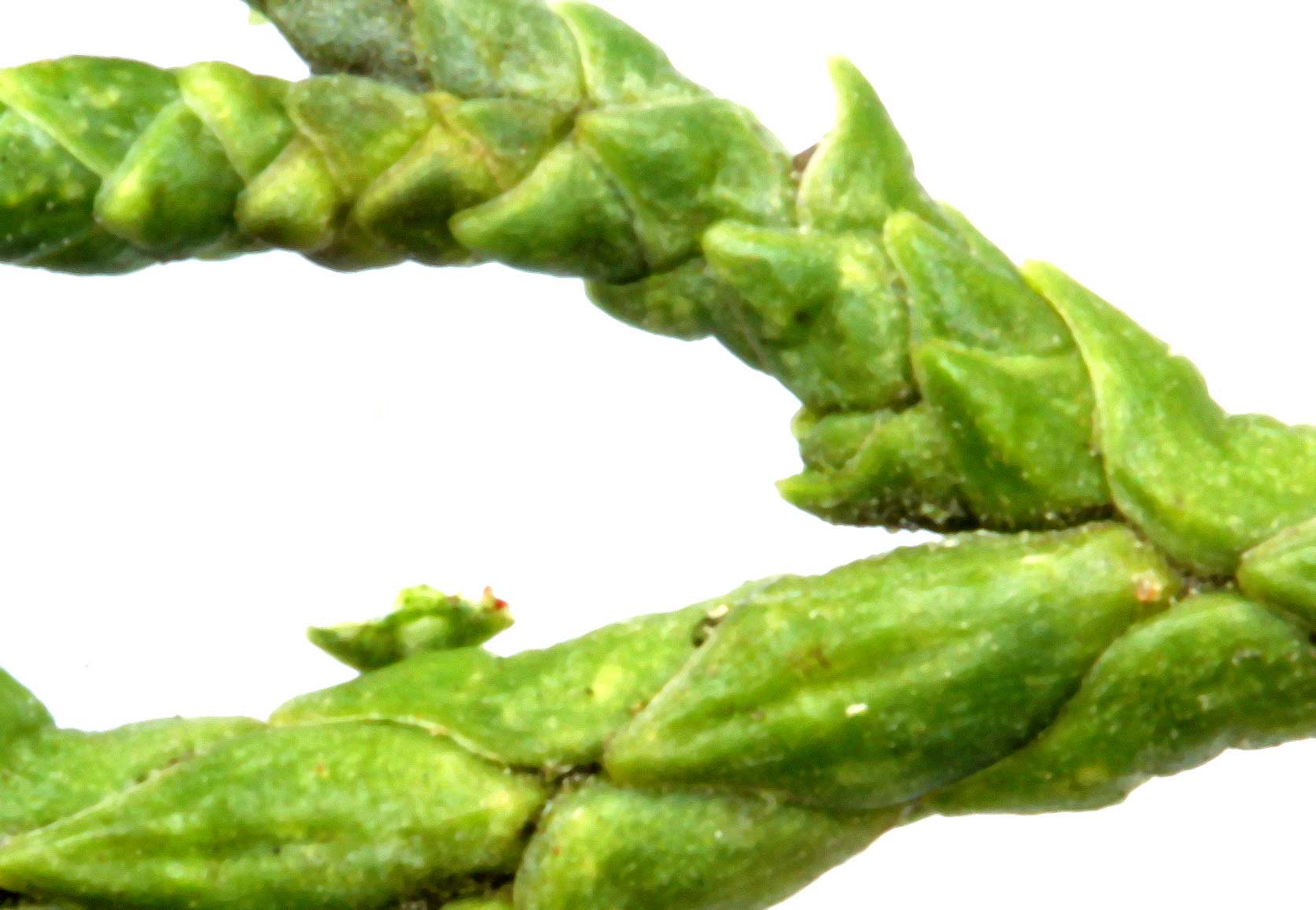
Conifers with needle-like leaves
B. Next we examine how the needle attaches to the branchlet. Are single needles attached directly to the branchlet (fig.1) or are they attached in clusters (fig.3)?
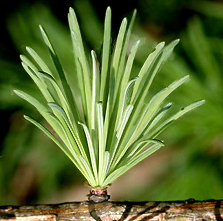
Needle attachment
C. The next character to examine is how the needles are attached to the branchlet. Are they attached directly to the branchlet (fig. 6) or indirectly by way of an intermediate structure like the peg-like sterigmata shown in Figure 4 and Figure 5?
Conifers that have needles that are directly attached to the branchlet with a suction-cup-like bases are in the Genus Abies, true firs.
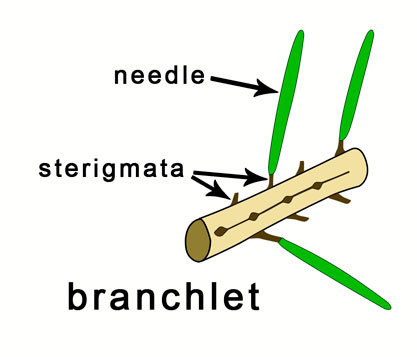
Conifers that have needles that are not attached directly to the branchlet, may be spruce, hemlock, yew, or Douglas-fir. Among these genera the spruces (Picea) have the most easily observed defining characteristic, the sterigmata. These structures can also be seen when the needles have fallen off the branches leaving the peg-like sterigmata that roughen the surface (fig.5).
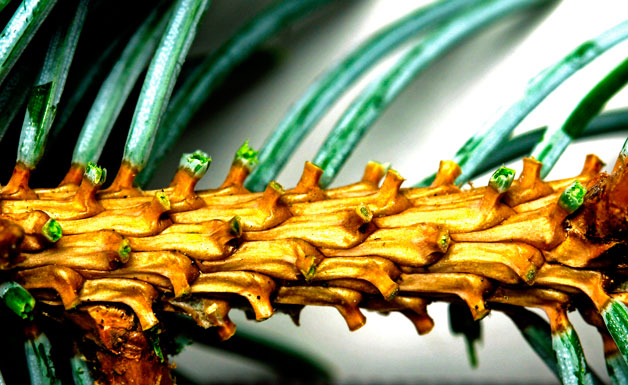
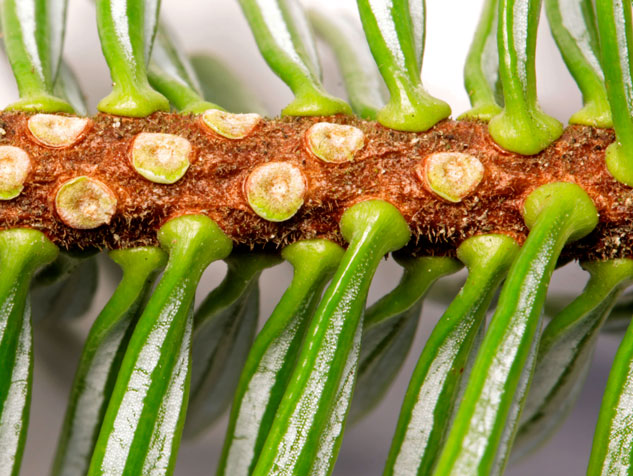
With or without petiole
D. To determine difference between spruce and the others, we must look at the structure of the leaf. The petiole (stem) is a structure in many leaves that attaches the leaf to the branchlet. The conifers that do not have a petiole are the spruces and the Douglas-fir. Spruces have woody sterigmatas that protube from the branchlets and connect to the needles (fig. 5). In the Douglas-fir (Pseudotsuga menziesii) the needle attaches to a swollen structure (cushion) on the branchlet (fig. 7).
The hemlocks and yews have a petiole that is intermediate between the leaf and the branchlet. In the hemlocks the needles narrow to form a petiole before joining the branchlet (fig. 8). In yews the petiole attaches to the branchlet decurrently, the leaf tissue connects to the branchlet and runs along the branchlet surface for some distance (fig. 9).
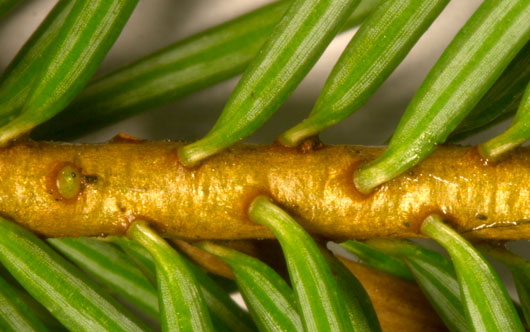
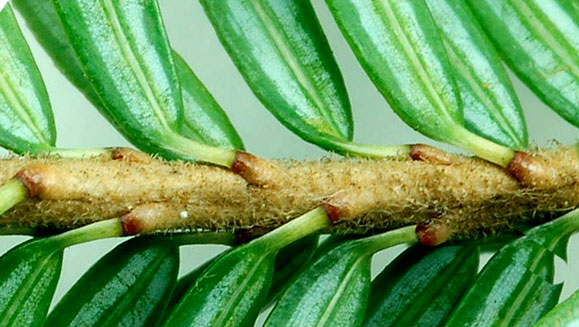
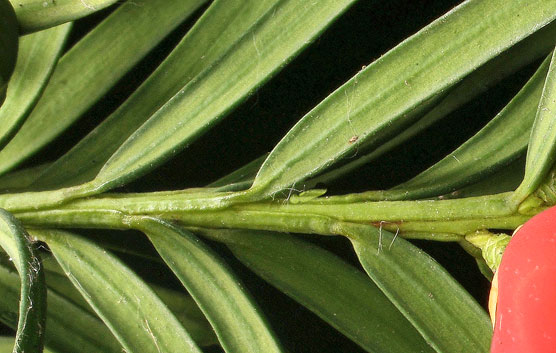
Conifers with clustered needles
E. Conifers with clusters of 2-5 needles (fig. 10) that are bound together with a fascicle (fig. 11) are in the Genus Pinus.
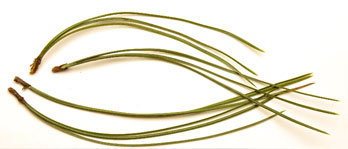
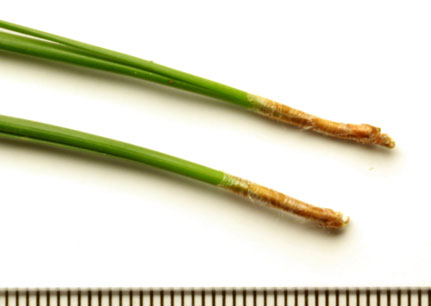
Vancouver Island's native pine species
E. Vancouver Island only has two species of pines, so it is just a matter of counting the number of needles in a fascicle to determine the species. If the fascicle has two needles it is a Shore pine (Pinus contorta var. contorta). This is the coastal variant of the Lodgepole pine Pinus contorta. Unlike the white pines, this species has small (30-50mm) round cones. If the fascicle has 5 needles, it is a Western White pine (Pinus monticola) and has long slender cones (100-250mm).
Conifers 2: Scale-like leaves
In this next section we look at trees that have scale-like leaves similar to those in Figure 2. Refer to Conifers Key 2.
A. First look at the cones. Are they fleshy berries (fig.12) or are they woody cones (fig.13)?
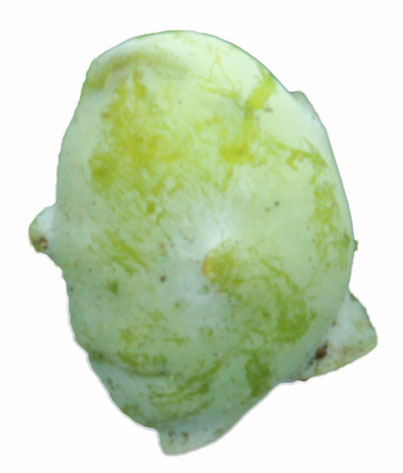
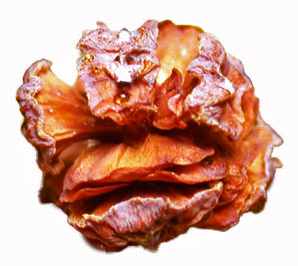
B. If the specimen has berry-like fruit, then it is a juniper. A Juniper berry is not a true berry; it is an unusual cone that has fleshy cone scales. Some junipers have "awl-like" leaves only (fig.14) and others have awl-like and scale-like leaves (fig. 2). Sometimes the awl-like leaves on the later are only on juvenile branchlets. On Vancouver Island only juniper with only awl-like leaves is the Common juniper (Juniperus communis), and it only occurs here as a low shrub.
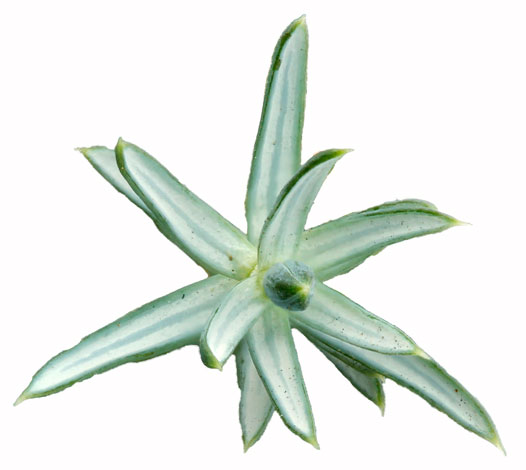
If the specimen has both awl-like and scale-like leaves and is a small tree, it is either a Rocky-mountain Juniper (Juniperus scopulorum) or the Seaside Juniper Juniperus maritima. The Seaside juniper was only recognized as a separate species in 2009, so many trees on Vancouver Island were recorded as Rocky Mountain juniper. The type location for this species is in Brentwood Bay, B.C. (fig. 15), on a rocky point at the end of Stelly's Cross Road. The two species are almost impossible to tell apart except that Juniperus maritima has more cones that have exserted seeds (fig. 16).
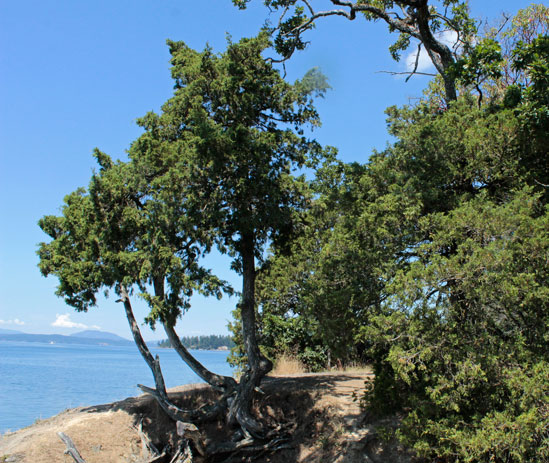
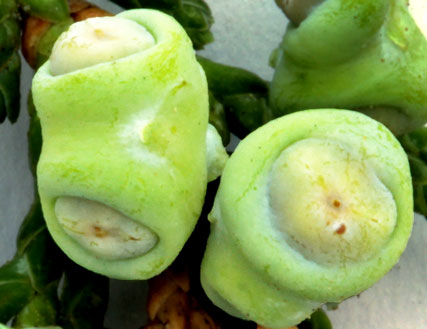
C. On Vancouver Island, trees with scale-like leaves and woody cones (fig. 13) can be either Western redcedar (Thuja plicata) or Yellow cedar (Cupressus nootkatensis ). Although locally we call these species "cedars", they are not in the genus Cedrus which are "true cedars". True cedars are exotic to this area. True cedars have needle-like leaves in clusters and upright cones. It is helpful having only two species to choose from. If the cones are oblong (fig. 17), the tree is a Western redcedar, and if the cones are globose, the tree is a Yellow Cedar (fig. 18).
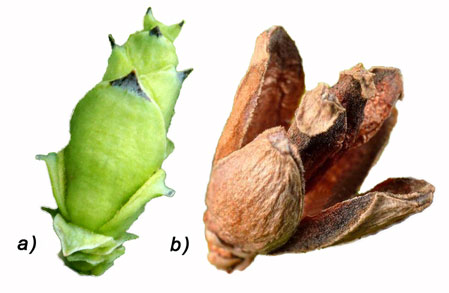
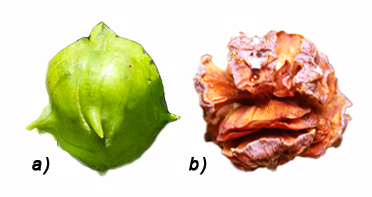
Conifers 3: Identification of conifers with single needle-like leaves
A. Conifers with single needle-like leaves may have either hanging cones (fig.19) or upright cones (fig.20) (Conifers Key 3). If the tree has upright cones, it can only be a "true fir" Genus Abies. If the tree has hanging cones, it may be a spruce Genus Picea, a hemlock Genus Tsuga or a Douglas-fir Genus Pseudotsuga.
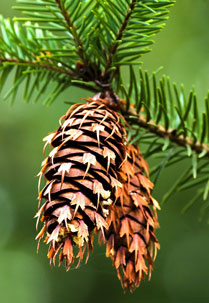
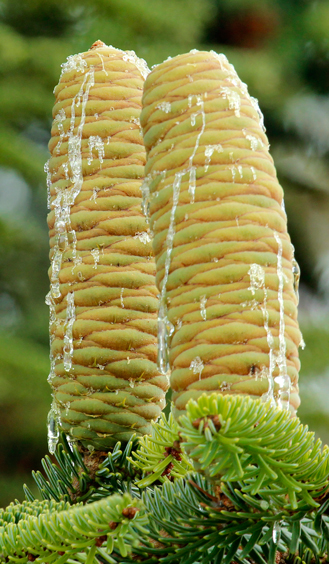
Species with hanging cones
B. Most spruce needles (Picea) cross-sections have a square profile and will roll between your fingers, while hemlock needles and Douglas-fir needles have a rectangular cross-section and will not easily roll between your fingers. On Vancouver Island, there is only one species of spruce, the Sitka spruce (Picea sitchensis).
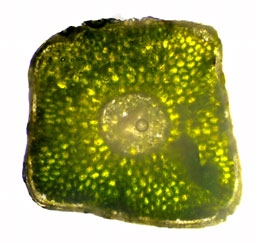
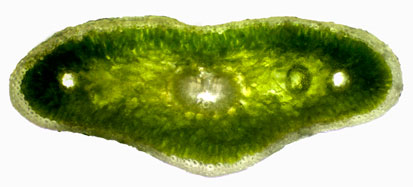
C. The Douglas-fir can be easily distinguished from hemlocks by their cones. The Douglas-fir cones have unusual bracts that project between the scales. The three-pronged bracts look like the tail and back legs of a mouse that is hiding between the scales (fig. 19). The cones are also longer than hemlock cones.
The two hemlocks differ in both size and colour of their cones and by foliage characteristics. Western hemlocks (Tsuga heterophilla) has very small cones (5-30mm long) which are green when mature while Mountain Hemlock (Tsuga mertensiana) has larger cones (30-80mm long) which are purple when they are mature. Another difference is that Western hemlock foliage is looks "lacy" and has two alternating needle lengths, while Mountain hemlock has denser needle coverage and more uniform needle length.
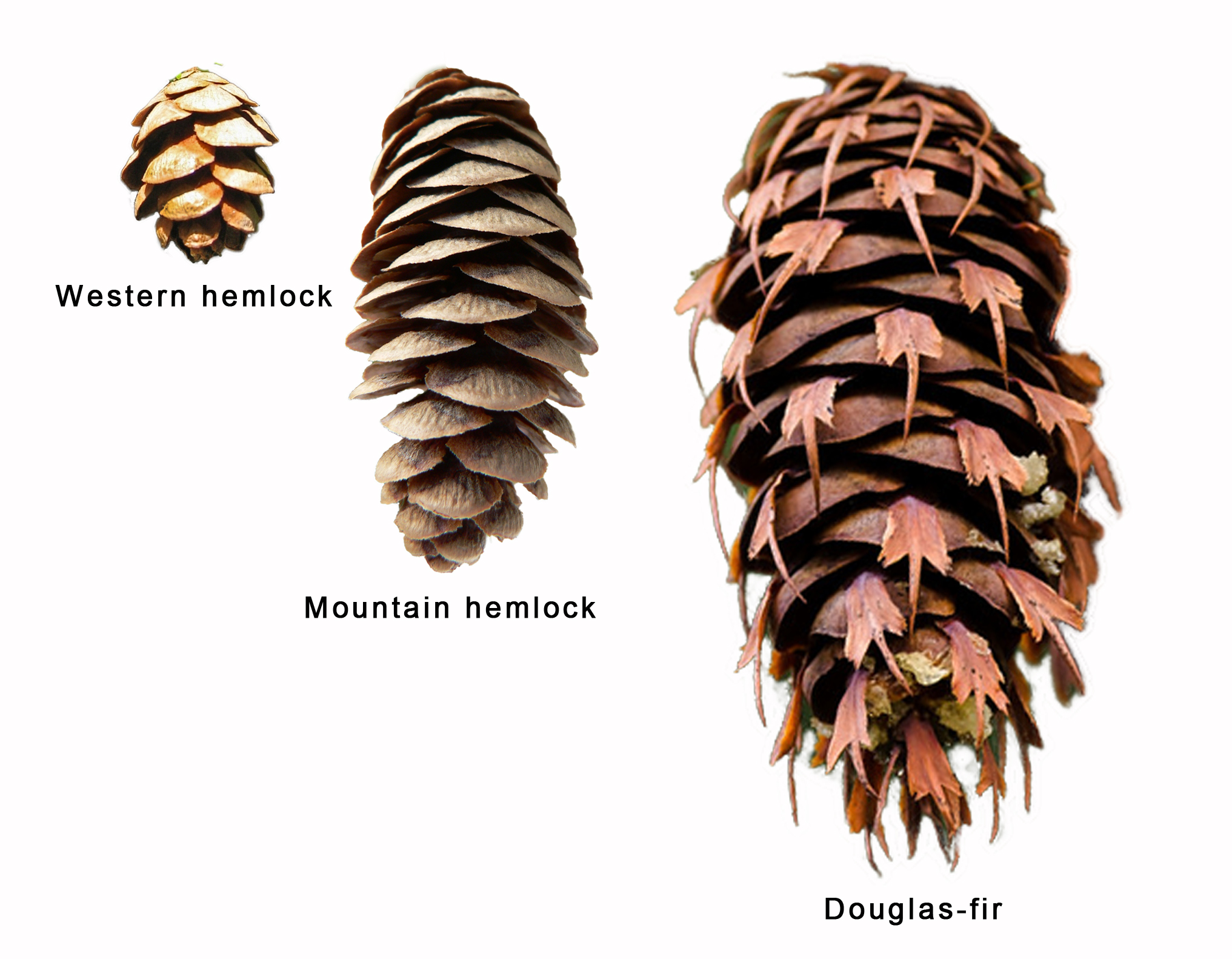
Species with upright cones
A. D. There are three species of "true firs" on Vancouver Island, the Grand Fir (Abies grandis), the Amabilis Fir (Abies amabilis), and the Subalpine fir (Abies lasiocarpa). On the west coast of Canada, foresters refer to both Abies amabilis and Abies grandis, incorrectly as "Balsam firs". The Balsam fir (note: Abies Balsamea) is an east coast species that does not occur naturally in British Columbia.
The Grand fir can be distinguished from the others by the colour of it's mature cones; they are green (fig. 25) while the cones of the Amabilis (fig. 26) and Subalpine firs are blue/purple and by the pectinate arrangement of it's needles on the branchlets (fig. 27).
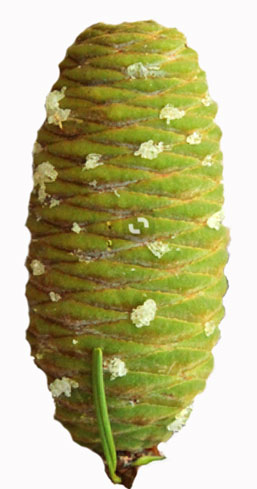
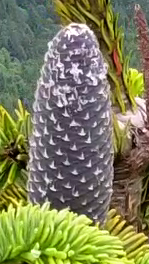
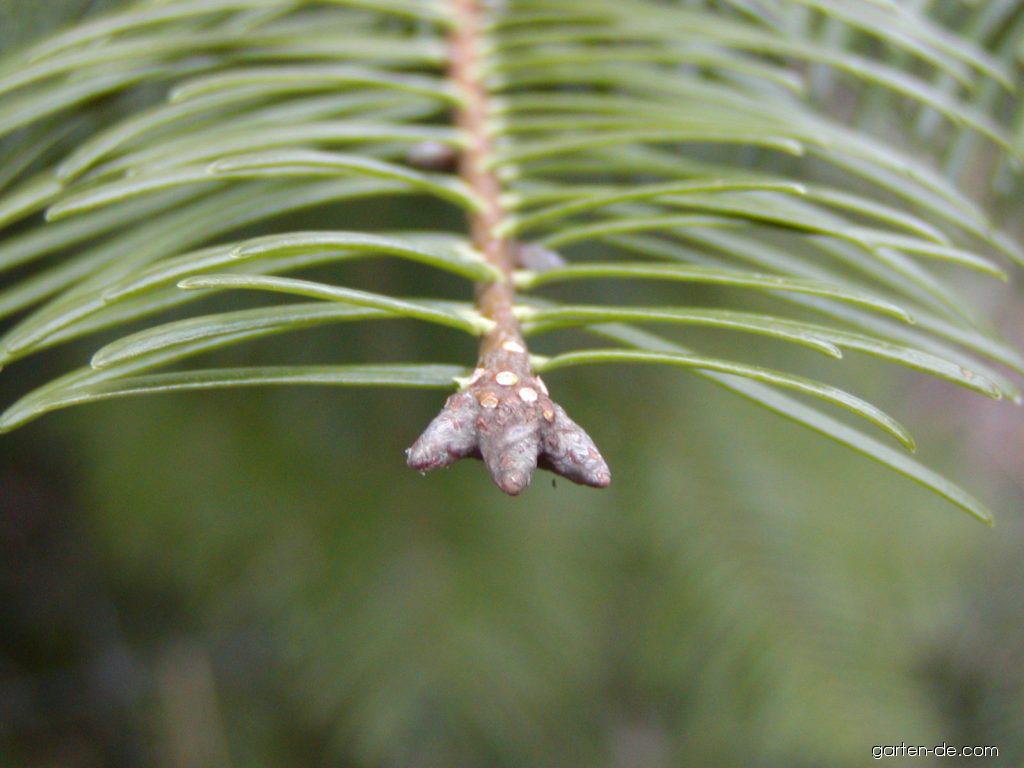
Resin canal location
E. The difference in the position of the resin canals can help distinguish between the Amabilis fir and the Subalpine fir. The resin canals in Abies lasiocarpa are are marginal (fig.28) while those in Abies amabilis are median (fig. 29). In addition, the Subalpine fir usually has a quite distinctive spire-like shape (fig. 30) that is quite different from the mature Amabilis fir (fig.31).
